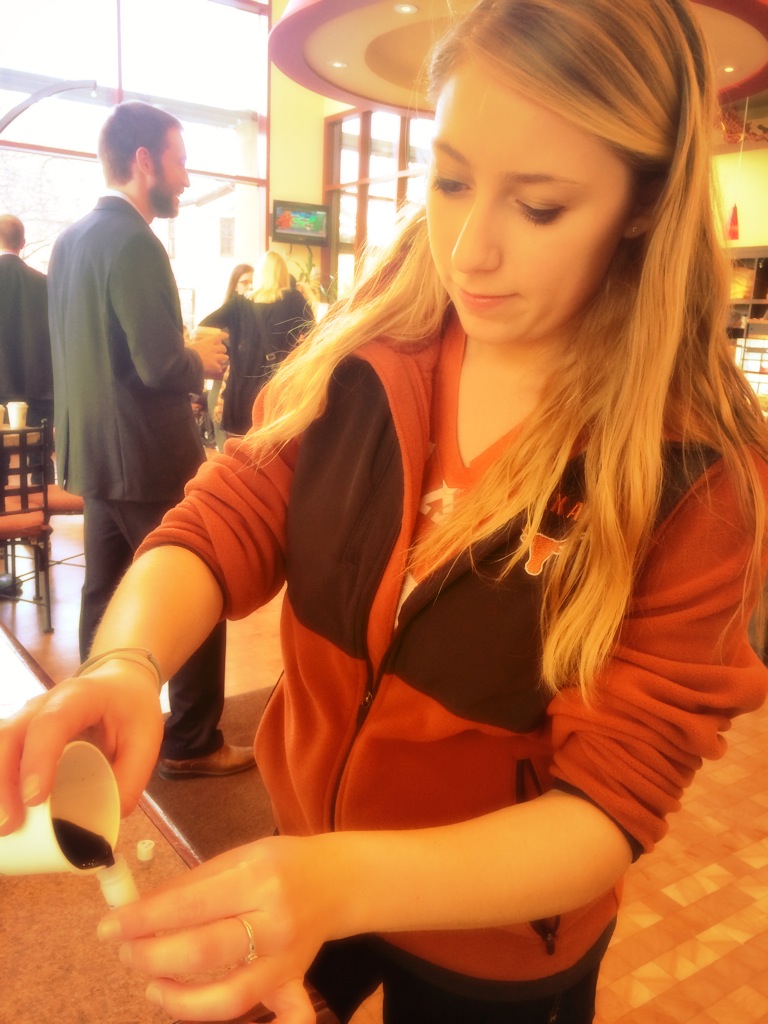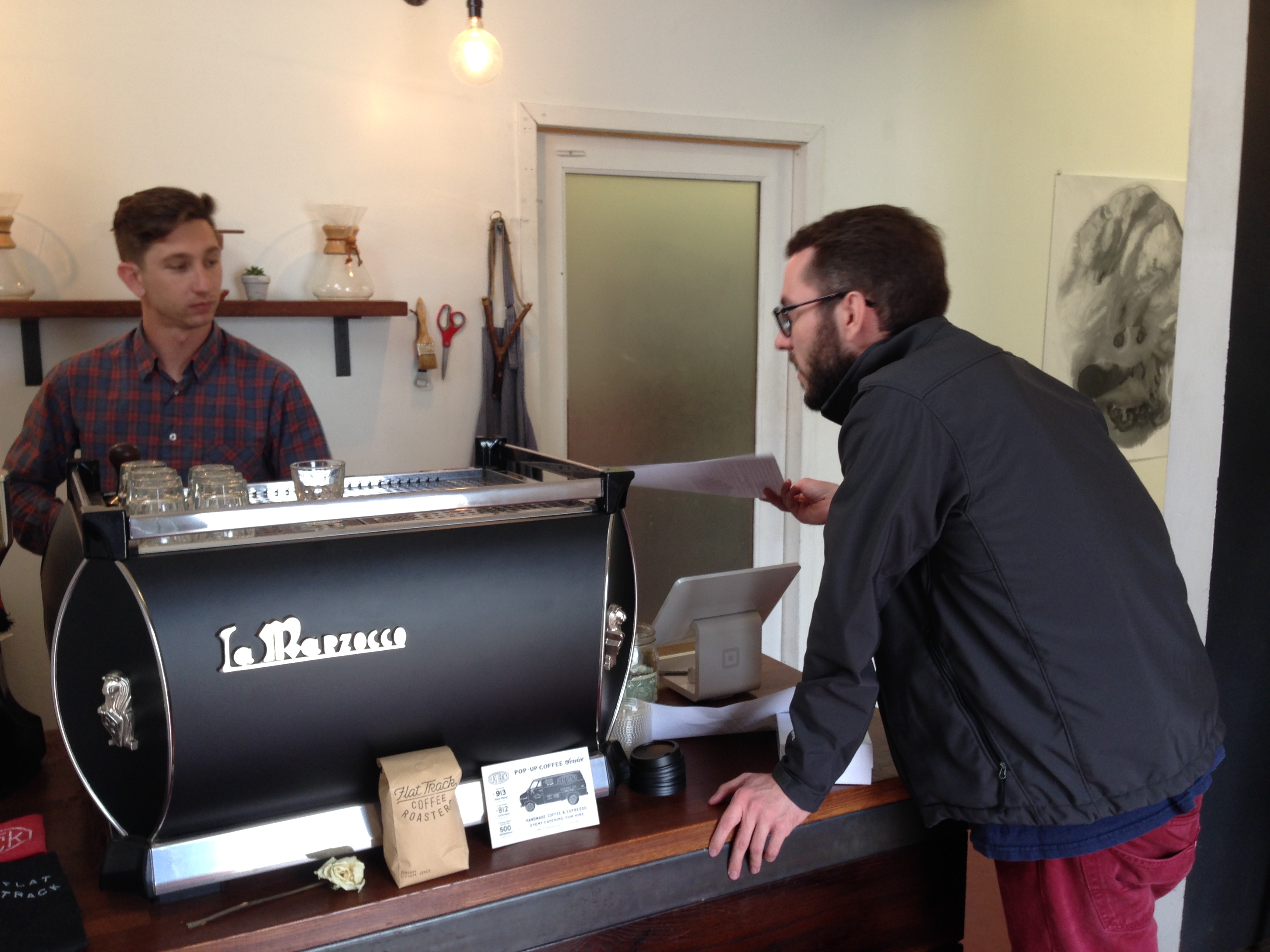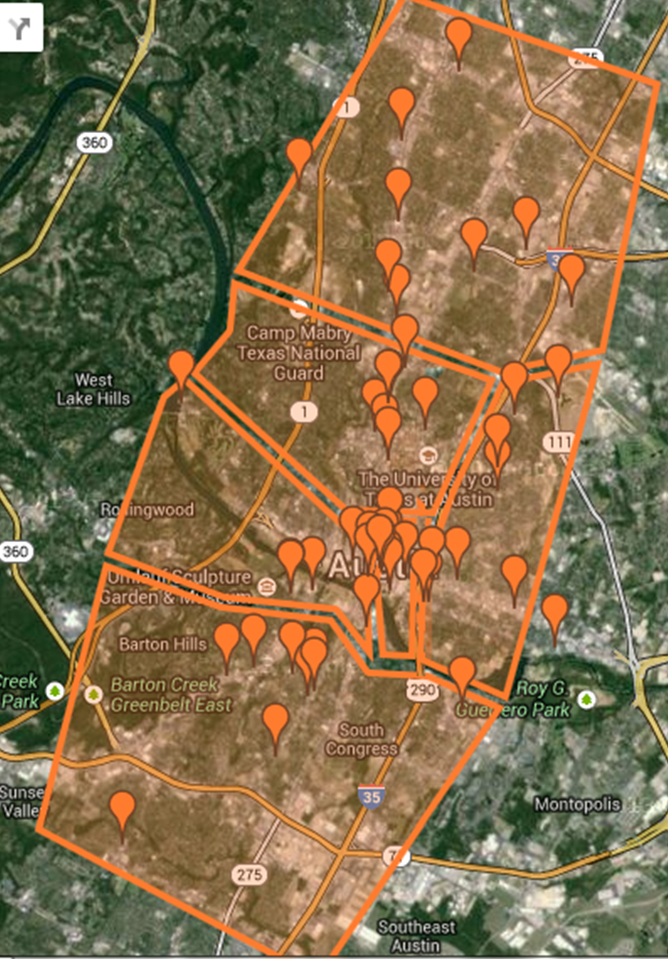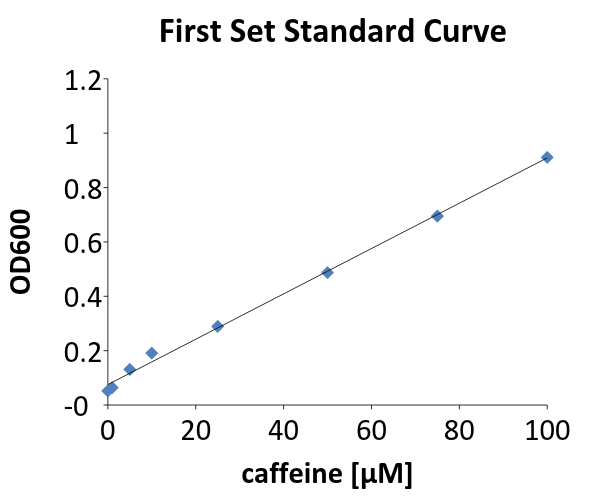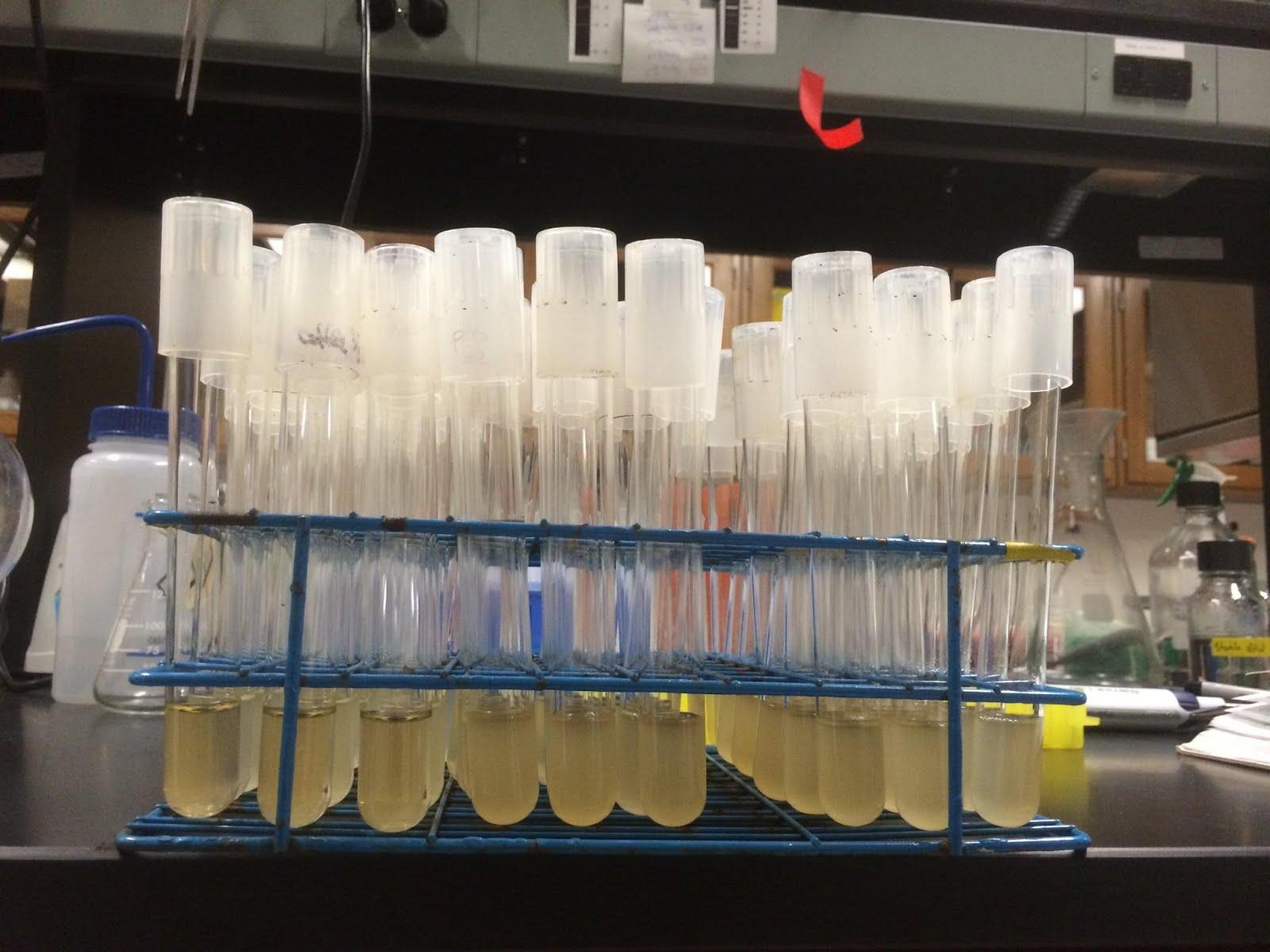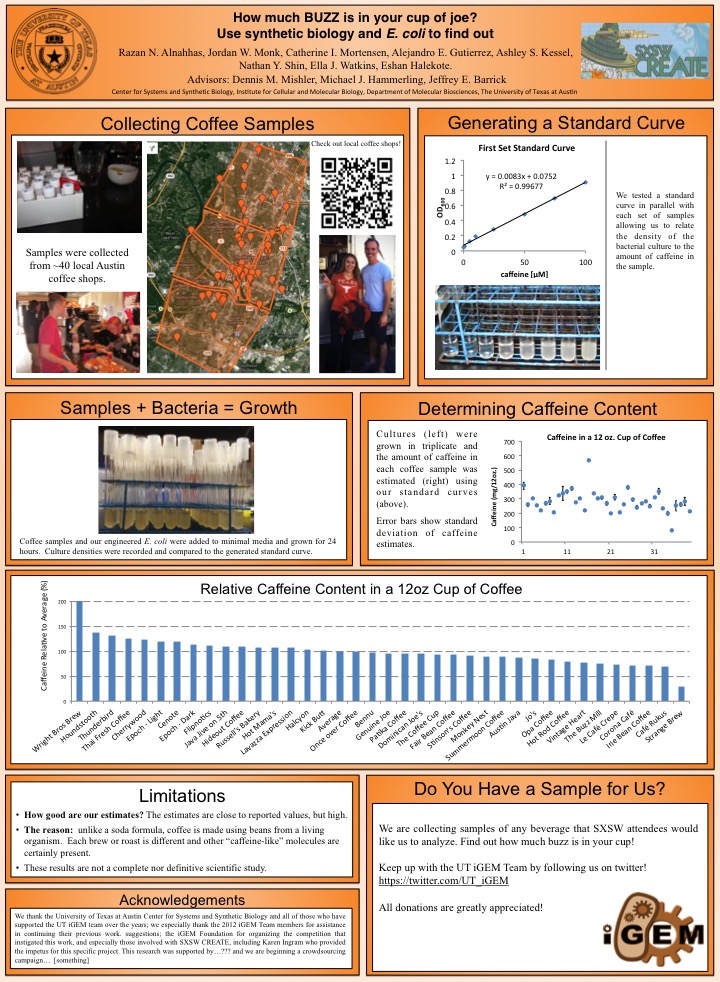Team:Austin Texas/human practices
From 2014.igem.org
(→Caffeinated Coli) |
(→Caffeinated Coli) |
||
| Line 78: | Line 78: | ||
Back at the lab, the team members got to work. Senior members divided their attention to mentor the new members in the techniques necessary to start cultures, inoculate cultures, and other general laboratory safety. | Back at the lab, the team members got to work. Senior members divided their attention to mentor the new members in the techniques necessary to start cultures, inoculate cultures, and other general laboratory safety. | ||
| - | |||
<h2>Measuring Caffeine Content</h2> | <h2>Measuring Caffeine Content</h2> | ||
| Line 86: | Line 85: | ||
The ''E. coli'' we used are a synthetic strain, previously made by the [https://2012.igem.org/Team:Austin_Texas 2012 UT Austin iGEM team]. This strain lacks [...its normal guanine synthesis pathway], but contains a plasmid with a set of genes that enables the organism to synthesize guanine from xanthine and many of its derivatives, including caffeine. Without caffeine (or other xanthines), the strain cannot grow. When caffeine is added, the strain grows normally until the caffeine is completely metabolized, at which point the cells can no longer synthesize guanine, and cease to grow. Thus, by looking at the relative growth of the strain with different samples of coffee and comparing it to a standard curve of growth in solutions with known amounts of caffeine, we could somewhat accurately measure the amount of caffeine in the coffee. | The ''E. coli'' we used are a synthetic strain, previously made by the [https://2012.igem.org/Team:Austin_Texas 2012 UT Austin iGEM team]. This strain lacks [...its normal guanine synthesis pathway], but contains a plasmid with a set of genes that enables the organism to synthesize guanine from xanthine and many of its derivatives, including caffeine. Without caffeine (or other xanthines), the strain cannot grow. When caffeine is added, the strain grows normally until the caffeine is completely metabolized, at which point the cells can no longer synthesize guanine, and cease to grow. Thus, by looking at the relative growth of the strain with different samples of coffee and comparing it to a standard curve of growth in solutions with known amounts of caffeine, we could somewhat accurately measure the amount of caffeine in the coffee. | ||
| + | [[file:UT_Austin_relative_caffeine_levels_coffee_shops.png|600px|center|left| Figure 1. Relative levels of caffeine in house coffee samples from around Austin.]] | ||
<h2> SXSW Create </h2> | <h2> SXSW Create </h2> | ||
A couple of weeks later, we presented this data set at the SXSW festival. As part of this outreach, we explained our project and synthetic biology to a wide range of people. Many people who came by had little to no background in science or technology, and even most of the ones who did had not heard about synthetic biology. By discussing our experiments with bacteria and coffee, an interesting and easy to understand application, we were able to explain what synthetic biology is and how it can be used in a beneficial way. Occasionally, these conversations would branch out into wider topics of science and technology. | A couple of weeks later, we presented this data set at the SXSW festival. As part of this outreach, we explained our project and synthetic biology to a wide range of people. Many people who came by had little to no background in science or technology, and even most of the ones who did had not heard about synthetic biology. By discussing our experiments with bacteria and coffee, an interesting and easy to understand application, we were able to explain what synthetic biology is and how it can be used in a beneficial way. Occasionally, these conversations would branch out into wider topics of science and technology. | ||
| - | + | ||
| + | |||
Revision as of 02:12, 15 October 2014
|
 "
"

